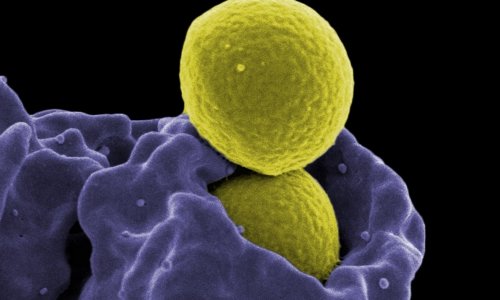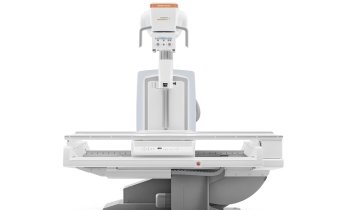Ultraviolet light - an invisible weapon against MRSA
A few years ago, Dr Peder Bo Nielsen MD FRCPath, Consultant medical microbiologist at Northwick Park Hospital, London, UK, launched a research programme on airborne transmission of nosocomial infections. Until then, so called air-biology held no high priority in infection prevention and control. The prevailing perception was that colonisation and contamination mainly happens due to direct contact with surfaces and/or persons – i.e. hand carried by healthcare workers.
A request from a company to test its air-decontamination solution first aroused scepticism came first, which rapidly changed to amazement and then came conviction. Today, following several years of experience, Dr Nielsen recognises the importance of airborne transmission and the need to include it in any hospital infection and prevention programme. Interviewed by Meike Lerner (EH), he described the significance of his research results:
"Our mind was a little conventional regarding infection control measurements. Therefore, when Medixair asked us to test their product in an everyday clinical environment, we didn’t really believe it had any impact on hospital infection. The function of Medixair is based on ultraviolet germicidal irradiation and the equipment looks like a mobile air-condition unit. After some negotiations we produced a controlled study that was approved by the ethics committee. It was properly designed with an intervention group and a control group. The intervention room was equipped with a mobile Medixair unit. The control room was without. Both study rooms were treated alike, and patients and environment were screened bacteriologically three times a week.
A significant difference in favour of Medixair appeared very quickly. The difference was surprisingly large; therefore we doubled the study period, but got exactly the same result. During the entire trial no patients got MRSA in the trial room compared to about 50% in the control room. There could only be one explanation. By taking bacteria out of the air we have protected both patients and the environment. Obviously this raised our interest in air-biology and we did some further tests to prove the risk of MRSA transmission through the air. So we swapped surfaces that nobody every touches like ceilings and, indeed, we found a lot of MRSA in non-touch-areas. That could only mean that MRSA is swirled into the air and then settles down somewhere: on a ceiling, a patient, nurse, in another room. According to the literature, the germs may remain floating in the air for about 30 minutes – quite a long time to ‘travel’ around. And every time a door, for example, is opened it acts like a fan and the bacteria starts to move again.
Those findings were the reasons to re-think our strategy. Until then we tried to protect the patient and the air from germs by wearing caps, masks and gloves. Now we started cleaning the air to avoid colonisation – with impressive results.
Today, about 30 Medixair are in use in our hospital for a wide range of purposes. Because of the mobility of the system, it is possible to turn every room into an isolation room, which means that we don’t move the patient to a special room but bring the isolation room to the patient. We use the Medixair for patients who are colonised with MRSA, and also for any other patient colonised with multiresistant bacteria such as Acinetobacter, ESBL, VRE -- and not to forget Clostridium difficile. During the swine flu epidemic, for example, we placed them in the waiting area and the examination room in order to protect patients and staff. In my opinion, ‘mobile isolation rooms’ may change the way we deal with epidemics because we can ‘isolate’ many more patients for less cost. Fortunately, many hospitals are taking this into account and air-biology is becoming an important issue."
About Medixair
Medixair is a high energy ultraviolet air steriliser. The unit uses four 25W low pressure mercury UVc lamps that emit germicidal radiation at a peak wavelength at 253,7nm. By arranging the lamps in a close coupled geometric pattern, and employing a slow and controlled airspeed, it is possible to produce exceptionally high germicidal energy levels. Medixair is quiet in operation, economical to operate, portable and easy to install and maintain.
22.07.2010











